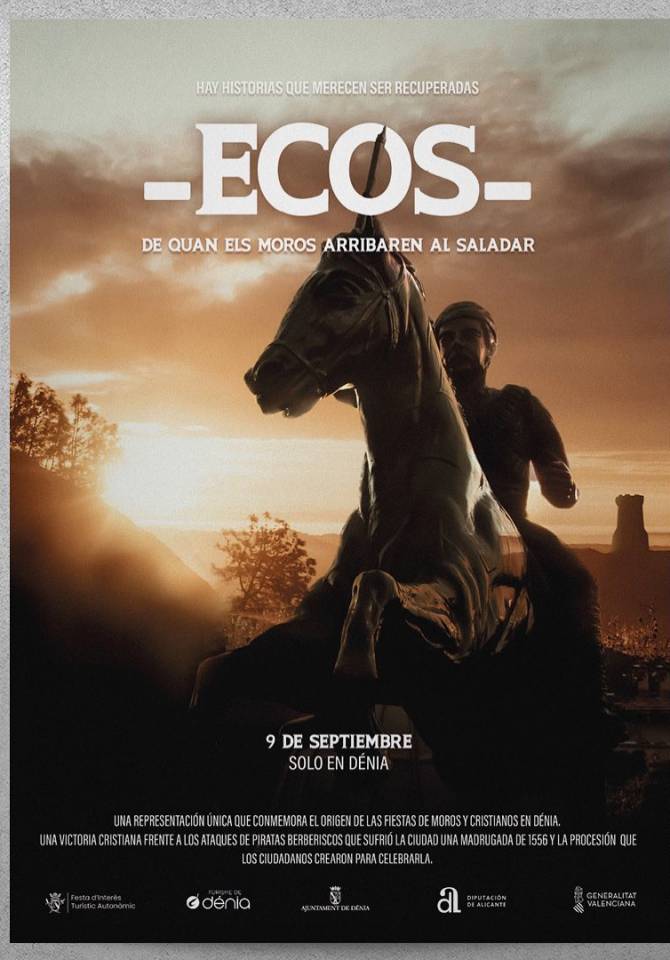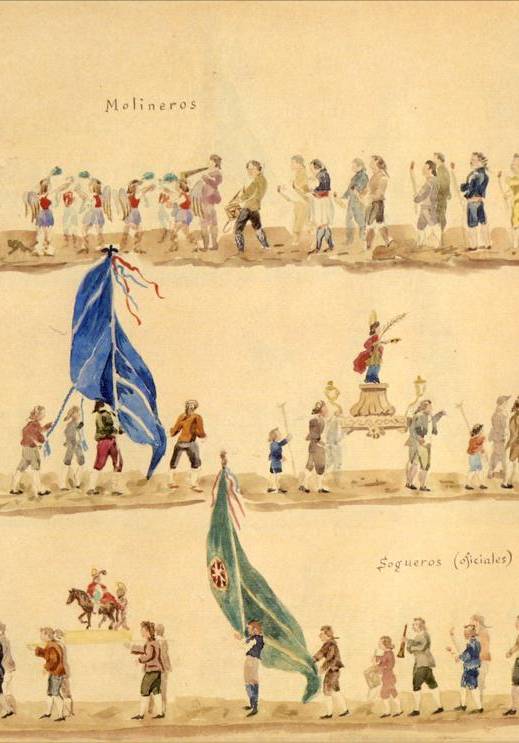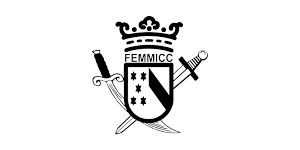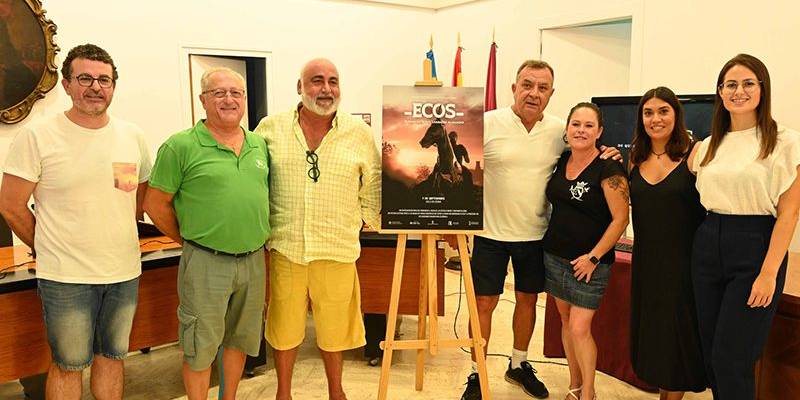September 9th
9 September 2023 19:30 h
9 September 2023 19:30 h
Itinerary: Roda Muralles, Fora Mur, carrer de la Mar, plaça del Consell
Music, dances and the population.
Proclamations of the kingdom encouraging people to come and participate in this procession
Dianium Dansa with different dances, giants and bigheads and the dragon together with 3 colles de dolçaina i tablalet.
City of Dénia celebrating the dances.
The muixaranga from La Marina Alta with dolçaina i tabalet.
Moorish villages of the interior of La Marina Alta
At the end of the procession, fireworks in Plaça del Consell
Recreation and Historical Recovery of the Procession "De quan els moros vingueren al Saladar"
Recreation and Historical Recovery of the Procession "De quan els moros vingueren al Saladar"
The 9th of September 2023, approximately a month after the beginning of the Moors and Christians festivities, a procession from the 16th century takes place for the first time in 500 years. This initiative aims to revive an ancient tradition that lasted for over a century and marks the origin of the current Moors and Christians Festivities of Dénia.
The procession
The procession commemorates a historical event that occurred on the 10th of September 1556, when Dénia, at that time the best-fortified city in the marquisate, suffered a surprise attack by Algerian corsairs with 10 galleys and 600 men. At that moment, the Dianense troops were outside supporting a false attack in Javea, leaving the city unprotected. However, the steadfast defense of the inhabitants of Dénia managed to repel the attack and save the city. This event deeply affected the population, and in commemoration, a procession "de gracias" (a procession of gratitude) for being saved from a feared attack, and called "De quant los Moros vingueren al Saladar" (when the Moors arrived at Saladar) was established. Over time, this religious celebration turned into a festivity that recalled the attacks of the Muslim corsairs, which persisted until the late 17th century.
Dénia has taken on the challenge of rescuing this festivity and historical event, with the intention of reconnecting with forgotten episodes of the past. This represents a way to establish a link with that intense and glorious period of local history. Furthermore, there is a desire to elevate the Festival of Moors and Christians from its status as a Regional Interest Festival to the recognition of National Tourist Interest Festival.
To achieve this recognition, it is necessary to have a historical event exclusive to Dénia, which can be revived, celebrated, and sustained over time, also generating local recognition. In this regard, the episode of "De cuant los Moros vingueren al Saldar" will provide the desired opportunity to both the festival and the city
Mig Any
At the end of February, at the midpoint between past and upcoming festivities, participants of the Moros y Cristianos festivities gather to celebrate the Mig Any. While it lacks specific historical or cultural roots, this celebration arises from the passion for festivities and the sense that the time between these events is long for the festeros (festivity participants) of the filaes (groups). The occasion is driven by the desire to don festive attire, showcase the distinctive colors of each group, and enjoy an informal parade set to the rhythm of musical bands.
Taking place six months after the August celebrations, this festivity provides a moment for participants to come together and celebrate. During the Mig Any, key roles such as the captain, flag bearers, and ambassadors, or Primer Tró, are officially introduced at the social center. A communal dinner is also organized, bringing together members from both Moorish and Christian filaes.
This occasion not only offers an opportunity for enjoyment but also for learning. The gathering is used to conduct a cultural event where the history and evolution of the festivities are shared. Although lacking a specific historical foundation, the Mig Any represents an emotional link between the festeros and their passion for the Moros y Cristianos festivities.





